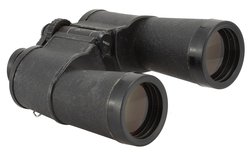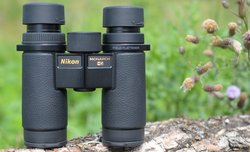Halley’s Comet, officially designated as 1P/Halley, is, undoubtedly, one of the most well-known short-period comets. It visits the inner Solar System and the Sun’s proximity every 75 years.
The 30-32 mm instruments, being aimed mainly at tourists and day nature-watching enthusiasts, are physically small. A small objective lens doesn’t gather much light but, as you use it when the weather is fine and lighting conditions - rather favourable, it is not a bothersome flaw.
I know close to nothing about cuisine. I can’t cook well and I don’t think I’ll ever become a chef. Still, from time to time I enjoy eating – a healthy dish, made of the best, freshest products, properly seasoned and arranged nicely on your plate so you see the minute attention to detail of the professional who has prepared it.
During last 2-3 years we’ve seen many new companies which offer top-of-the-range binoculars and spotting scopes making their debut on the market. Not so long ago we informed about a launch of Blaser binoculars, produced by German Sport Optics.
In the previous part of our „monarchy adventures” we related the genesis of roof prism binoculars produced by Nikon and their evolution toward the current Monarch series. In this part we are going to check how these products actually fare while tested outdoor and whether they can persuade prospective owners, expecting a solid pair of binoculars, that they are worth their interest.
In April 1945 the Third United States Army under command of George S. Patton entered Jena and occupied the Carl Zeiss Jena factory. According to eyewitnesses the factory, despite intensive air raids of the Allied Forces, was in a good shape.
In our series of articles concerning legendary binoculars the products of the Eastern Germany Zeiss had a place practically guaranteed. Their factory was situated in Jena (an then in Eisfeld not far away from that city).
History of Zeiss 10x40 binoculars– from the beginning of the twentieth century to contemporary times
Currently most of people not especially knowledgeable in the matter of optics think that Porro prisms binoculars are outdated and roof prisms models are modern. It would be difficult to agree with such a statement because first roof models were launched almost precisely at the same time as Porro instruments; we owe former of them to the German Moritz Hensoldt & Sons company which already in 1905 showed first models of that type calling them Dialyt.
The golden age of Porro binoculars lasted several dozen years and started right after the World War II. Among many models the 8x30 devices were undoubtedly the most popular ones. Zeiss factories, moved to Oberkochen, started their production from that model exactly; Leica were still manufacturing the Binuxit model, launched before the war, and Swarovski showed their Habicht 8x30W on the market at that time as well.
An optical system of almost every contemporary pair of binoculars consists of three parts: an objective lens which gathers the light, a prism assembly, inverting the image and an eyepiece, decisive when it comes to a magnification ratio and a field of view.
It’s difficult to say when exactly the first pair of binoculars was created. An idea to put two telescopes together was perhaps not exactly difficult to come with; it most probably occurred not later than at the beginning of 17th century, with the usage of the first refractors.
We haven’t published any spotting scopes tests on the Optyczne.pl/Allbinos.com site yet although we have been thinking about doing so several times. Unfortunately conducting such tests is not an easy task – in fact it is far more complex than testing binoculars.
The Sky-Watcher BKP 150750EQ3-2. Not the most romantic name, to tell you the truth but if you are one of these people who feel a bit lost amid the jungle of telescope offers and different astronomical- observatory optics, this piece of equipment should definitely interest you.
We are continuing the history of Polish Optical Industries. Let’s just remind here that the first part of the article encompassed the beginning and a very quick development which was stopped all of a sudden by the onset of WWII.
We’ve already featured series of articles describing the history of such companies as Canon, Leica, Nikon, Olympus and Sony (available only in Polish on Optyczne.pl). Many people have been asking us afterwards to publish next parts, with the history of others foreign optics producers.





















